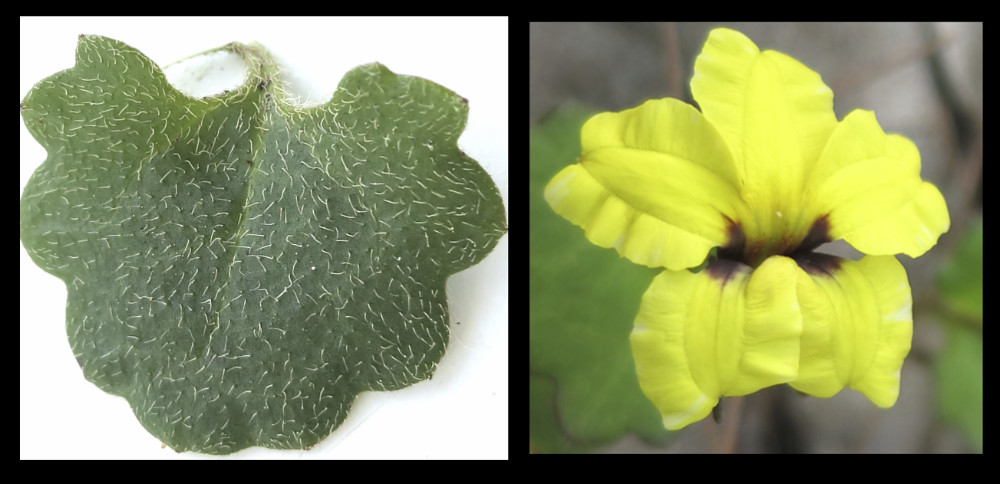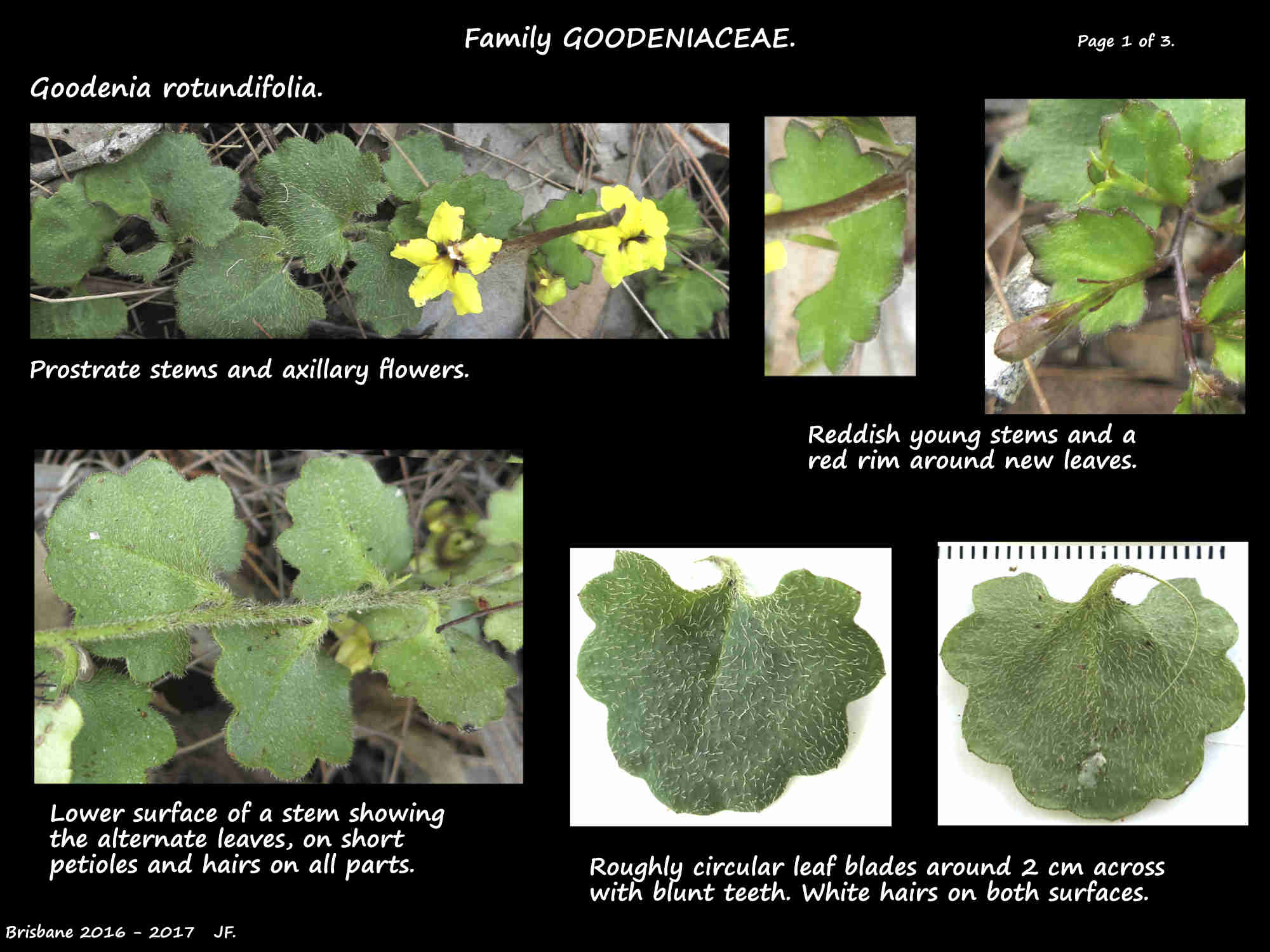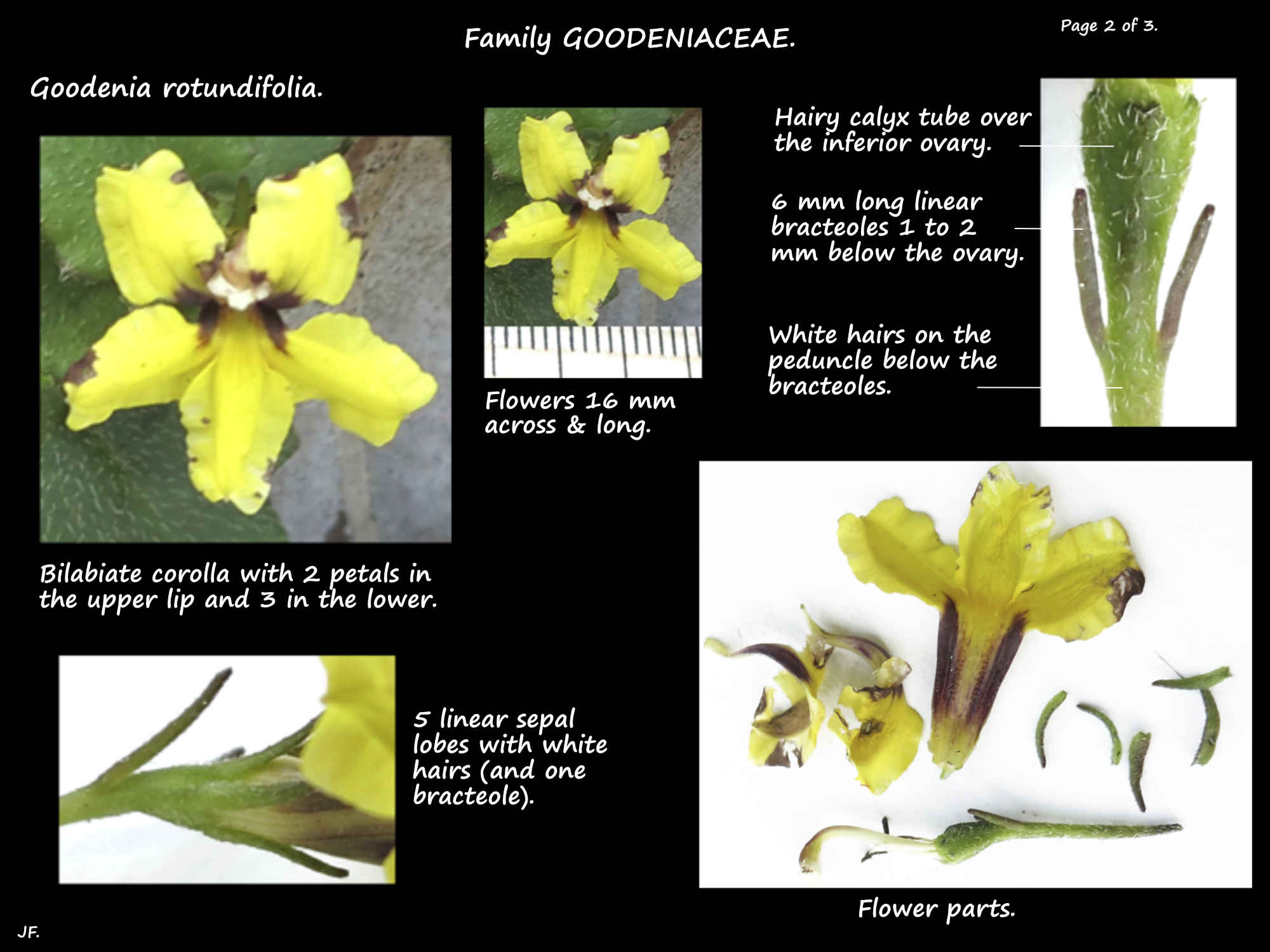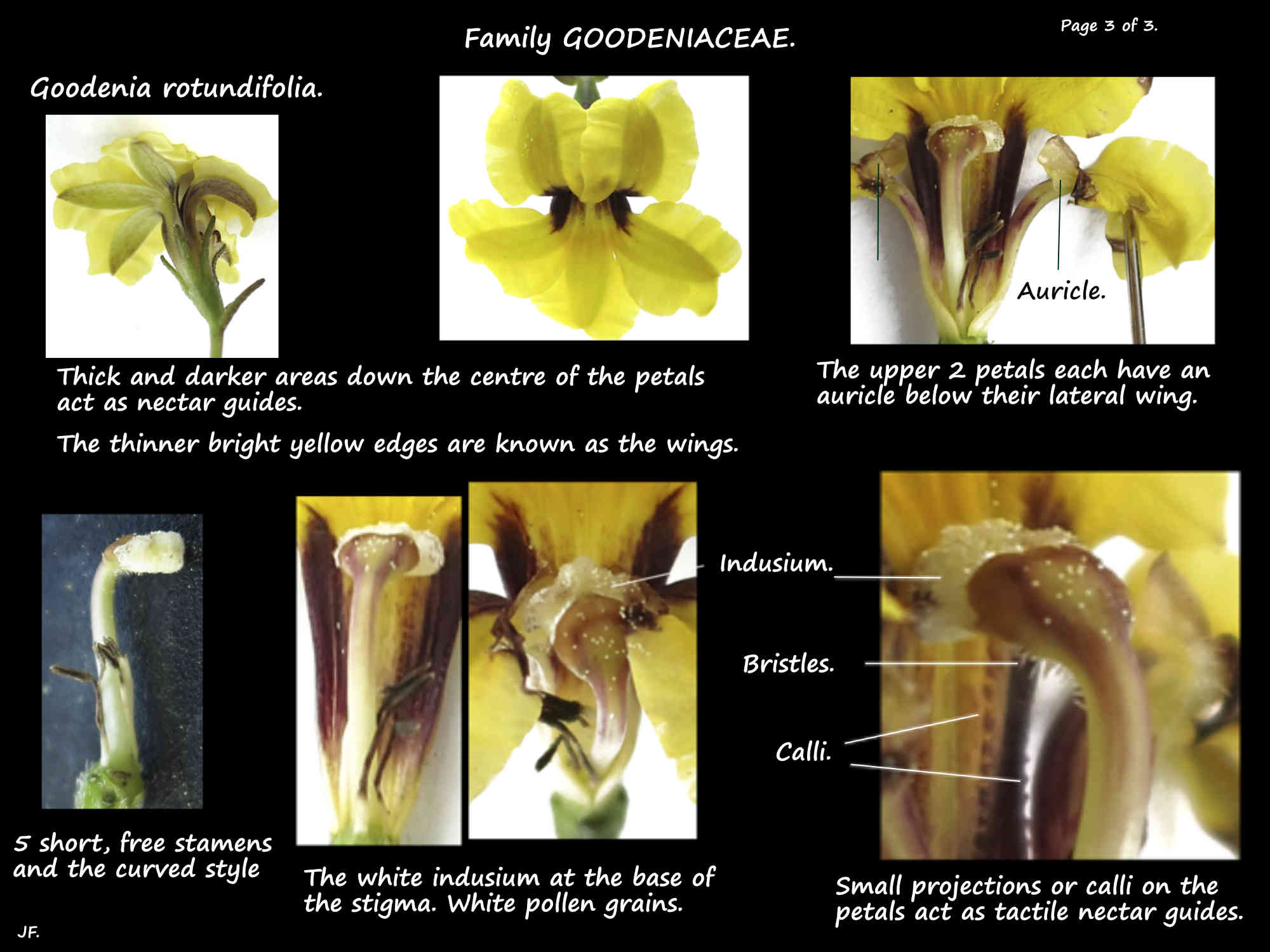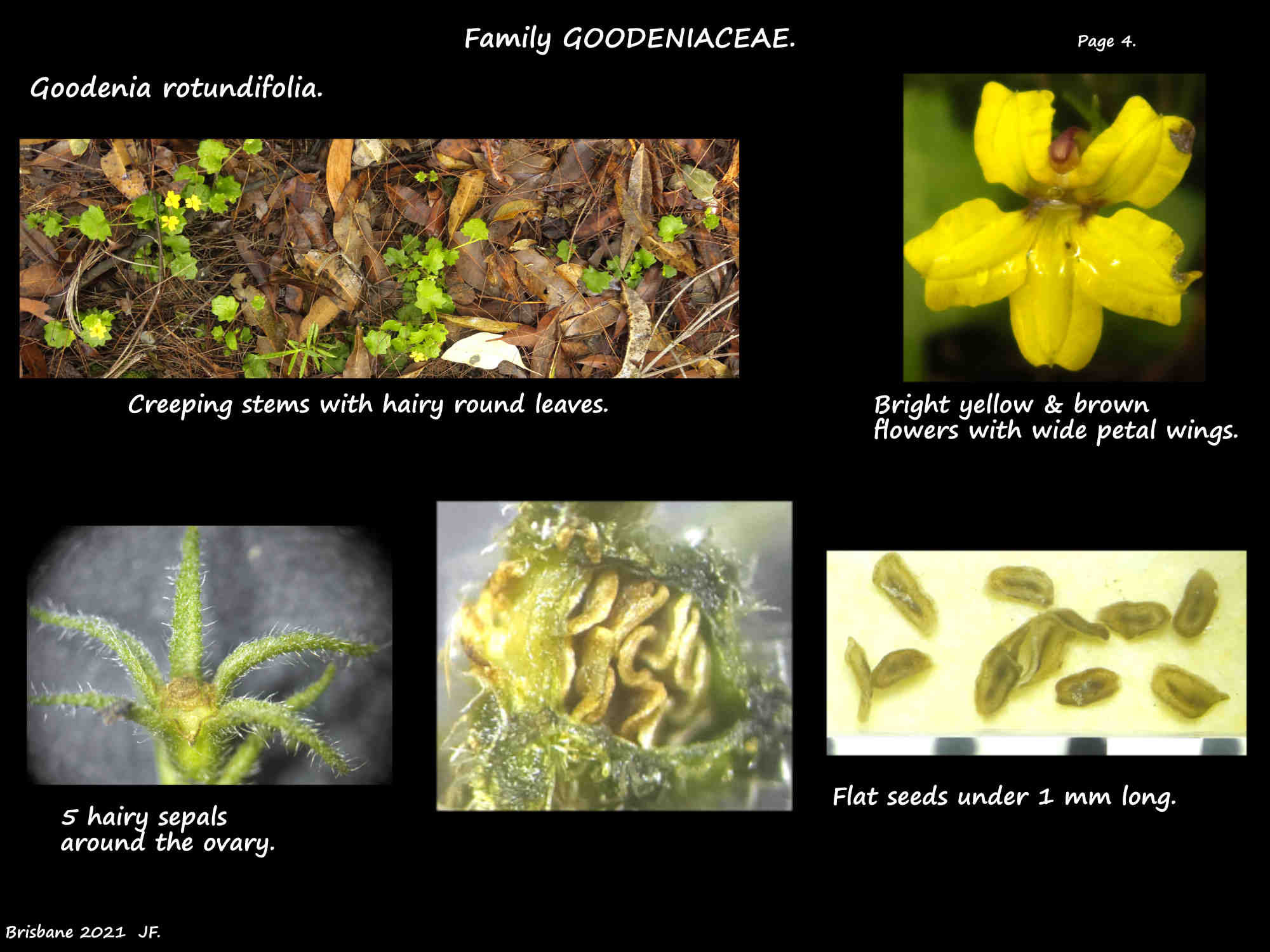Goodenia rotundifolia.
Family Goodeniaceae.
They are prostrate or erect herbs up to 50 cm high.
The round to obovate leaves are alternately arranged on the stem and the few basal ones soon disappear.
On petioles up to 1 cm long the blade is up to 2 cm.
The edges have rounded teeth.
Leaf hairs are very variable with most mature plants having dense white hairs while some have none.
Varieties have been described reflecting this – G. rotundifolia var. glaberrima,
G. rotundifolia var. pubescens and G. rotundifolia var. hirsuta.
The flowers are on stalks with both bracts and bracteoles.
The linear bracteoles are at the top of the stalk within 2 mm of the base of the ovary.
This short upper section of the stalk is the pedicel and the longer part below is the peduncle.
The peduncle is up to 2.5 cm long and has linear, leaf-like bracts at the base.
There are 5 narrow sepals up to 7.5 mm long.
The corolla, up to around 1.5 cm long has 2 petals in the upper lip and 3 in the lower.
They all have wings and the upper 2 have auricles that surround the stamens.
The petals have a few hairs on the inner surface and small projections or calli that act as
tactile guides for insect pollinators.
Flowers are yellow with brown markings that act as visual nectar guides.
The 5 stamens are free.
The ovary has 1 or 2 locules with numerous ovules.
The single style has 1 (2 – 4) stigmas and 1 ( 2 – 4) indusium.
The indusium is elliptic.
The fruit are roughly spherical capsules around 6 mm long with pale brown seeds.
J.F.
